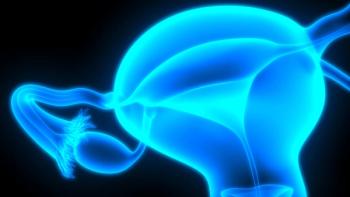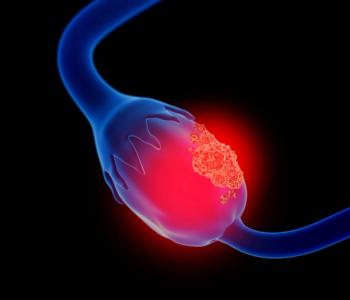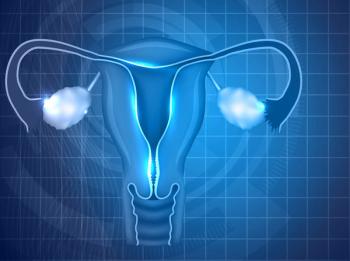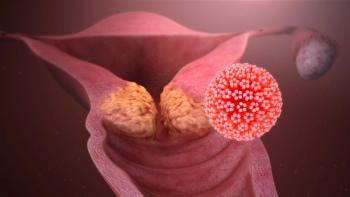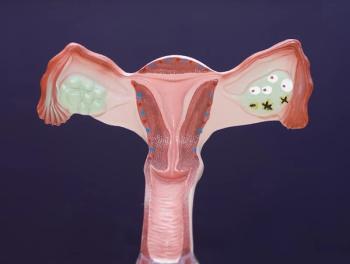
HPV Signal Protein p16 Clears Up Cloudy Images in Cervical Cancer Cytology
Human papilloma virus often lurks in cervical tissue, and it can cause cancer there. But the infection is also often benign, particularly among young women. Biomarkers of transformation are proving useful in helping cytologists to decide when a suspicious-looking Pap result is truly a sign of trouble.
It will be a long time before widespread use of the human papilloma virus (HPV) vaccine begins to yield a decline in the number of suspicious results from Pap smears. Although it has become common to test for the virus in ambiguous tissue samples, even when it turns up the implications aren't always clear. Particularly among younger women, the presence of HPV in the cervix can be benign. Is the virus just living in the cervix, or has it begun to transform the cells?
Biologists have been
One of the most promising biomarkers, the protein p16, appears to be adept at identifying high-grade cervical intraepithelial neoplasia (CIN) and at clarifying the nature of equivocal cytology results from Pap smears. It also plays a part in a panel of 3 biomarkers that are useful for identifying the origin of cancer cells when the tumor arises at the junction between the cervix and endometrium. Knowing exactly where the malignancy arose is crucial because it affects the choice of treatment.
P16 is a cell-regulatory protein. In cervical cancer, the oncogenes associated with the cancer-causing properties of HPV have the effect of blocking the functions of p16 in the cell cycle. However, when HPV integrates into the host genome, this disruption leads to a buildup of p16 and its overepression in cervical cells that are transformed.
A steady stream of research has supported the value of p16 in pinpointing high-risk cervical specimens. Last month, a pathology team headed by Kenneth R. Shroyer, MD, PhD, of Stony Brook University in New York,
An even larger study, a
Other recent trials from
A newer test called ProEx C, which detects two other proteins that are overexpressed in cervical cancer (minichromosome maintenance protein 2 and topoisomerase II-alpha), has shown similar promise in
In any case, they are regarded as equivalent by Stanford University pathologists who wanted to find the best way to distinguish two tissues that have significant morphological overlap even to the experienced eye of the pathologist: endometrial and endocervical carcinoma. Using tissue samples from the Stanford pathology archive, they assessed the ability of 3 markers for HPV (p16, ProEx C and in situ hybridization) as well as several traditional histochemical markers, for their ability to distinguish the site of origin for histological samples when this is not clear.
Their report, which
Except for a few special cases, they conclude, a panel of 3 markers-estrogen or progesterone receptor, vimentin (a ubiquitous filament protein) and any of 3 tests for HPV (p16, ProEx C, or in situ hybridization)-is optimal for distinguishing between endocervical and endometrial carcinomas.
Results for ProEx C appeared comparable in most cases to those for p16; the numbers were too small to find a strong difference between them in this limited application. The familiar biomarker carcinoembryonic antigen (CEA), which was favored in the previous study, could not stand up to its newer competition and is not included in the panel of tests recommended in the more recent report.
Newsletter
Stay up to date on recent advances in the multidisciplinary approach to cancer.


